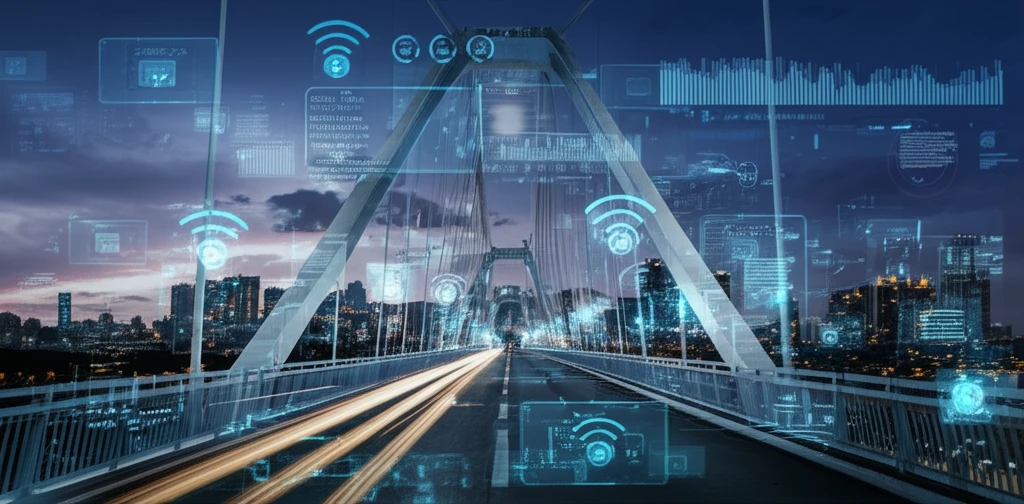
Bridge Monitoring Goes Hi-Tech: How Real-Time Data is Changing Infrastructure
"Discover how new real-time damage identification methods are revolutionizing bridge maintenance, ensuring safety and longevity in our infrastructure."
Keeping our bridges safe and sound is a huge task. Traditionally, it involves a lot of manual inspections and scheduled maintenance. But what if we could know exactly when and where a bridge needs attention in real-time? That's the goal of structural health monitoring (SHM), and it's becoming more achievable with new technology.
Damage identification is super important for SHM. The trick is to find the features that tell us about damage without being fooled by environmental changes. Think about it: bridges expand and contract with the weather, and that can look like damage if you're not careful. So, we need smart techniques that can tell the difference.
There are two main ways to tackle this problem: output-only methods and model-based methods. Output-only methods use data collected from the bridge without needing a detailed computer model. Model-based methods, on the other hand, use a computer model to predict how the bridge should behave and compare that to what's actually happening.
How Does the Real-Time Damage Identification Method Work?

A recent study introduces a new real-time damage identification method that uses a combination of techniques to monitor bridge health. This approach involves three main steps:
- Efficient Basis Functions: Mathematical representations of bridge behavior from FE models.
- Partial Least-Squares Regression (PLSR): Statistical analysis to relate bridge responses to damage indicators.
- Data Fusion: Combining different types of structural responses for a comprehensive damage assessment.
The Future of Bridge Safety
This new method represents a significant step forward in bridge safety. By using real-time data and advanced analytical techniques, we can identify and address potential problems before they become major issues. This not only saves money on repairs but also ensures the safety of everyone who uses these vital structures.
